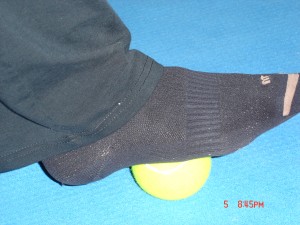Those of you training for the London marathon or any other marathon this spring will be well into your training by now. Let’s hope that all has gone to plan and that you are injury free.
This blog will highlight some of the most important areas of the body for runners to focus on when stretching. The blog will also discuss the different methods of stretching.
Owen Anderson, with a PhD in physiology and a running coach in America, identifies 5 ‘hotspots’ for running injuries
-Calf
-Knee
-The iliotibial band (long band of tissue runs on the outside of thigh, hip to knee)
-The Achilles tendon
-The foot (ie. Plantar fasciitis)
These ‘hotspot’ injuries along with low back and hip problems can result for a number of reasons, from old running shoes or a lack of stretching or strengthening to biomechanical issues or poor running technique. This blog is focusing on stretching which is one component of many to help prevent running injuries. If you require more detailed information on stretching or other components i.e. strength training, treatment of an injury or programme writing please contact me direct for advice or appointments.
Types of Stretching
-Active (static) stretching
This type of stretch is most commonly used as it can be performed unaided and the muscle is lengthened in a controlled manner with little or no movement and is held for 30-60s repeated 2-3 times. Most yoga stretches are active/static.
-Passive Stretching
A second person is usually required to aid this type of stretch. So called passive, as the muscle is not activated or contracted to bring about the stretch, the therapist or team member moves the body part into the position of tension and holds it there.
Both people must work together when carrying out a passive stretch. Feedback from the patient/athlete is important so as not to over stretch and the person aiding must be experienced enough to feel the optimum stretch.
Figure 4a below shows the trainer aiding a passive stretch of the client’s pectoral/chest muscles, over a swiss ball. Figure 4b is also thought to be a passive stretch as her hamstring stretch is being aided by a piece of equipment (stretchy band). The partner or trainer aided stretch, I feel, is more effective as the client can completely relax into the position, which facilitates the stretch.
-Dynamic Stretching
Dynamic stretching is similar to ballistic stretching but according to strength & conditioning coach Nick Grantham, the newer variant, dynamic stretching, is more controlled than the ballistic option.
The athlete dynamically stretches the body part with rhythmic bouncing movements in and out of the stretch, using momentum to gradually improve the joints range of motion.
Watch this youtube link for an example of a dynamic stretch warm-up http://www.youtube.com/watch?v=CvIGjwZ25YA&feature=related
Ballistic stretching has caused controversy over the years, the concern being that there is a high risk of injury if not performed well. However it can be very useful in developing explosive muscle power (plyometrics) required in many sports and for late stage injury rehab.
Due to the high risk of injury with dynamic stretching, it is important that the athlete seeks advice from a qualified trainer before attempting this. You will also need to have a good base strength before moving onto this advanced technique.
I hope you have enjoyed this blog on stretching; there are many other types of stretching which will be covered in a future blog. For further advice or 121 training contact either:
Personal trainer Tony Welford at Bodyline Fitness Ealing on 07789 818390 or email djtonywelford@yahoo.co.uk
Osteopath Lisa Opie W5 & W12 07956 954093 or email lisa@osteopath-west.co.uk










